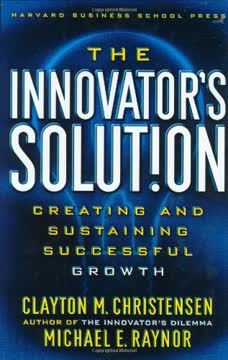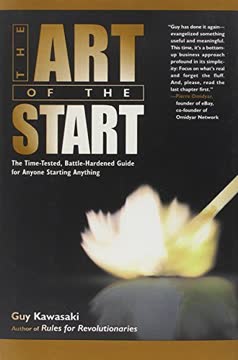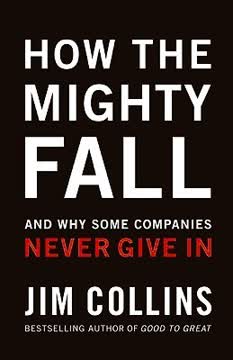Key Takeaways
1. The Long Tail: Unlimited Choice Transforms Markets
We are entering an era of unprecedented choice. And that's a good thing.
Shift from hits to niches. The internet and digital technologies are enabling a shift from a "hit-driven" culture dominated by blockbusters to a "Long Tail" marketplace where niche products collectively rival or exceed the mainstream market. This creates virtually unlimited choice for consumers across entertainment, retail, and other industries.
Abundance creates new opportunities. As the costs of production and distribution fall, it becomes economically viable to offer vast selections of products, even if individual items sell in small quantities. This allows businesses to tap into the "long tail" of demand for niche products that were previously unprofitable to produce or distribute.
- Examples: Netflix offering obscure films, Amazon selling millions of low-volume books, iTunes providing access to millions of songs
- Key enablers: Digital inventory, print-on-demand, recommendation engines
- Result: Markets shift from "one-size-fits-all" to "something for everyone"
2. Democratized Production: Everyone's a Creator
When the tools of production are available to everyone, everyone becomes a producer.
Barriers to entry fall. Digital technologies have dramatically lowered the costs of content creation and production across many fields. Professional-grade tools for music, video, publishing, and more are now accessible to amateurs and hobbyists.
Rise of the prosumer. This democratization of production tools has blurred the line between producers and consumers, giving rise to "prosumers" who both create and consume content. User-generated content platforms like YouTube, blogs, and social media have created new avenues for amateur creators to find audiences.
- Examples: GarageBand for music production, digital cameras and editing software for filmmaking
- Platforms: YouTube, WordPress, Instagram, TikTok
- Impact: Explosion of niche content, rise of influencers and microcelebrities
3. Digital Distribution: Infinite Shelf Space
The economics of the broadcast era required hit shows—big buckets—to catch huge audiences. The economics of the broadband era are reversed.
Physical constraints disappear. Digital distribution eliminates the need for physical inventory and shelf space, allowing for virtually unlimited selection. This removes a key bottleneck that previously limited consumer choice to mainstream hits.
New economics emerge. Without the constraints of physical retail, the economics of selling niche products changes dramatically. The "long tail" of low-volume sales becomes collectively significant when distribution costs approach zero.
- Traditional retail: Limited shelf space forces focus on bestsellers
- Digital retail: Can stock "everything" with minimal additional cost
- Result: Niche products become economically viable, expanding consumer choice
4. The New Tastemakers: Filters and Recommendations
Blogs are shaping up to be a powerful source of influential recommendations.
From pre-filters to post-filters. In a world of infinite choice, the challenge shifts from producing and distributing content to helping consumers find what they want. Traditional "pre-filters" (like publishers and retailers) are supplemented or replaced by "post-filters" that help navigate abundance.
Collective intelligence emerges. New recommendation systems leverage the collective behavior and opinions of users to guide others. This "wisdom of crowds" often proves more effective than traditional expert curation.
- Types of filters: User reviews, collaborative filtering, social recommendations
- Examples: Amazon's "Customers who bought this also bought", Netflix recommendations
- Impact: Drives demand down the long tail, helps consumers discover niche content
5. Niche Culture: From Mass Market to Massively Parallel
We are leaving the Information Age and entering the Recommendation Age.
Fragmentation of culture. As choice expands, cultural consumption becomes increasingly diverse and personalized. The shared experiences of mass media give way to a multitude of niche interests and communities.
Micro-cultures proliferate. The internet enables people to find others who share even the most obscure interests, leading to the formation of countless niche communities and subcultures.
- Shift: From "watercooler moments" to specialized online communities
- Example: Rise of fan communities around niche media properties
- Result: Increased diversity of cultural experiences, less dominance of mainstream hits
6. The Economics of Abundance: Rethinking Scarcity
Abundance is the driving force in all economic growth and change.
Scarcity thinking challenged. Traditional economic models focus on allocating scarce resources. The digital era introduces new paradigms of abundance that require rethinking fundamental assumptions about markets and consumer behavior.
New business models emerge. Companies adapt to abundance by finding ways to monetize attention, leverage network effects, and create value through curation and personalization rather than artificial scarcity.
- Shift: From controlling distribution to facilitating discovery
- Examples: Freemium models, ad-supported content, subscription services
- Challenge: Balancing abundance with sustainable business models
7. The Future of Marketing: Listen, Engage, and Empower
The best way to market to Long Tail consumers is to find out who is influencing them and focus your energies there.
Word-of-mouth amplified. In a fragmented media landscape, traditional mass marketing becomes less effective. Instead, successful marketing leverages the power of peer recommendations and influencer networks.
Transparency and authenticity. Consumers increasingly value genuine connections with brands. Companies must learn to engage in two-way conversations, embracing transparency and relinquishing some control over their message.
- Tactics: Influencer partnerships, content marketing, community building
- Tools: Social listening, sentiment analysis, user-generated content
- Example: Microsoft's Channel 9 developer community
8. Beyond Entertainment: The Long Tail in Other Industries
The Long Tail is nothing more than infinite choice.
Wide-ranging impact. While most visible in entertainment and media, Long Tail dynamics are reshaping many industries, from manufacturing to services.
Customization and personalization. The ability to economically serve niche markets enables greater product customization and personalized services across various sectors.
- Retail: eBay connecting niche buyers and sellers
- Manufacturing: 3D printing enabling on-demand production
- Education: Online courses serving specialized interests
- Healthcare: Personalized medicine and rare disease treatments
Last updated:
FAQ
What's The Long Tail about?
- Focus on Niche Markets: The Long Tail by Chris Anderson explores how the internet has transformed the marketplace by enabling businesses to sell a wide array of niche products instead of just focusing on a few hits.
- Shift in Consumer Behavior: The book discusses the cultural shift from a mass market to a market of multitudes, as consumers increasingly gravitate towards niche products.
- Economic Implications: Anderson argues that the aggregate sales of niche products can rival those of mainstream hits, fundamentally changing how businesses operate.
Why should I read The Long Tail?
- Understanding Modern Economics: The book provides insights into the new economics of abundance, where digital distribution lowers the cost of reaching niche markets.
- Relevance Across Industries: Concepts discussed are applicable across various industries, from entertainment to retail, making it valuable for anyone interested in market trends.
- Strategic Business Insights: Offers strategic insights for businesses looking to adapt to changing consumer preferences and leverage the power of niche markets.
What are the key takeaways of The Long Tail?
- Niche Markets Matter: Niche markets, previously overlooked, can collectively represent a significant portion of sales and should not be ignored.
- Power of Digital Distribution: Digital distribution has lowered the costs associated with offering a wide variety of products, enabling businesses to cater to diverse consumer tastes.
- Importance of Recommendations: Recommendation systems and filters help consumers navigate the vast array of choices available in the Long Tail.
What is the Long Tail concept?
- Definition of Long Tail: Refers to the vast number of niche products that, when aggregated, can make up a significant market share, despite each individual product selling in low volumes.
- Powerlaw Distribution: Based on powerlaw distributions, where a small number of items (hits) account for a large portion of sales, while a large number of items (niches) account for the remainder.
- Cultural Shift: Represents a cultural shift from a focus on mainstream hits to a more diverse array of products that cater to specific interests and preferences.
How does the internet enable the Long Tail?
- Lower Distribution Costs: The internet drastically reduces the costs associated with distributing products, allowing businesses to offer a wider variety of items without physical shelf space constraints.
- Access to Infinite Inventory: Online retailers can maintain an extensive inventory of niche products that would be economically unfeasible in traditional retail settings.
- Consumer Empowerment: The internet empowers consumers to discover and access niche products easily, leading to increased demand for items not available in physical stores.
What are the three forces of the Long Tail according to Chris Anderson?
- Democratizing Production: Technology enables more individuals to create and distribute content, leading to a greater variety of products.
- Democratizing Distribution: Easier access to a wide range of products through online platforms.
- Connecting Supply and Demand: Recommendation systems and filters help consumers find niche products that suit their interests.
How does the Long Tail affect traditional businesses?
- Shift in Marketing Strategies: Traditional businesses must adapt their marketing strategies to account for the growing importance of niche markets and the need for targeted advertising.
- Inventory Management Changes: Businesses can no longer rely solely on hits for profitability; they must also consider how to manage and promote niche products effectively.
- Emergence of New Competitors: The Long Tail creates opportunities for new competitors who can thrive by focusing on niche markets that larger companies may overlook.
What role do filters play in the Long Tail?
- Navigating Abundance: Filters help consumers navigate the overwhelming abundance of choices available in the Long Tail, making it easier to find products that match their preferences.
- Enhancing Discovery: Effective filters enhance the discovery process, allowing consumers to explore niche products they may not have encountered otherwise.
- Driving Demand: Filters can drive demand down the Long Tail by promoting niche products alongside mainstream hits, increasing their visibility and sales potential.
How does the Long Tail challenge the 80/20 rule?
- Reevaluation of Market Dynamics: Demonstrates that a significant portion of sales can come from niche products, not just the top sellers.
- Encouragement to Offer More: Businesses are encouraged to offer a wider variety of products, as the economics of the Long Tail allow for profitability even with low sales volumes.
- Shift in Consumer Expectations: Consumers now expect to find a diverse range of products, leading to a shift in how businesses approach inventory and marketing strategies.
What are the best quotes from The Long Tail and what do they mean?
- "The future of business is selling less of more.": Suggests that businesses can thrive by catering to niche markets rather than relying solely on blockbuster hits.
- "In a world of almost zero packaging cost and instant access to almost all content, consumers exhibit consistent behavior: They look at almost everything.": Highlights how the internet has changed consumer behavior, allowing them to explore a wider range of products.
- "The economics of the broadband era are reversed.": Signifies the shift from a focus on mass-market hits to a model where niche products can be just as profitable, thanks to online distribution efficiencies.
How does the Long Tail affect consumer behavior?
- Increased Variety Seeking: Consumers are more likely to seek out niche products that align with their personal interests, leading to a more diverse marketplace.
- Empowerment through Choice: Provides consumers with more choices than ever before, allowing them to find products that resonate with their individual tastes.
- Influence of Recommendations: Consumers increasingly rely on recommendations and reviews from peers and online platforms to guide their purchasing decisions.
What challenges does the Long Tail present for traditional businesses?
- Adapting to New Market Dynamics: Requires a shift in focus from blockbuster hits to niche products, involving rethinking inventory management and marketing strategies.
- Competition from Online Retailers: Online retailers that embrace the Long Tail can create significant competition for traditional brick-and-mortar stores.
- Need for Enhanced Customer Engagement: Businesses must engage with customers and understand their preferences to succeed in the Long Tail economy, possibly requiring investment in data analytics and personalized marketing efforts.
Review Summary
The Long Tail received mixed reviews. Many praised its visionary analysis of niche markets and the internet's impact on retail, finding it insightful for online businesses. Critics appreciated Anderson's exploration of how technology enables diverse product offerings. However, some found the book repetitive and questioned the broad applicability of its ideas. Reviewers noted that while the long tail concept is intriguing, its impact may be limited to certain industries. The book was generally seen as thought-provoking, albeit with some limitations in its arguments and examples.
Similar Books










Download PDF
Download EPUB
.epub digital book format is ideal for reading ebooks on phones, tablets, and e-readers.





